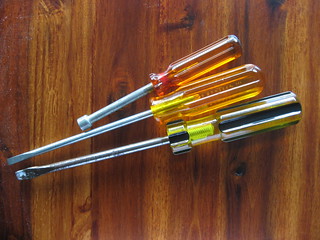
For years I've encountered this issue, and it always perplexed me: why do a lot of toolboxes stink? I had always assumed it was related to heavy use with sweat and dirt and zero cleaning, but after I started encountering it on my own, barely used tools, I started looking into it. You can find some posts on DIY forums asking the same question, and how they could never clean the toolbox well enough to get rid of the stink.
Eventually I found someone who pointed out it was coming from the tool handles, and then they pointed out the culprit: tool handles made of Cellulose Acetate Butyrate. A thermoplastic, it offers excellent UV and solvent resistance that cellulose acetate doesn't offer. And it feels in the hand like a natural substance, something that is almost intangible, like a tool that is made by craftsmen, a characteristic that a polyethylene or polypropylene handle does not have. CAB also offers no splinters like the older wood handles. It also can be very clear. And when that plastic begins to degrade, it releases free acetic acid and butyric acid.
The odor of vinegar is a familiar sign to those in the film and photographic business; the cellulose acetate backing of film releases it as it degrades. I once visited a famous photographer's house and his office where he stored his negatives had that acrid odor--while for a photographer it reminds you of the darkroom, the midpoint of the creative process, it also brings to you vividly the end of the process--the decay of the work.
The butyric acid, one of the carboxylic acids, with a formula of CH3CH2CH2COOH, just smells like, in polite company like parmesan cheese, or like rancid butter or vomit. It's not nice above a certain concentration.
Once I discovered this I immediately spent a little time sniffing each tool I had, and in short order discovered the ones that are the problem. They immediately got isolated from the rest, because the free butyric acid really does migrate and make everything unpleasant. I thought about giving the tools away, but really, who wants such a tool, even if free? I was going to throw them out, but that made me feel bad. And I think I've found a solution to stinky tools. I carefully fully coated the handles in two coats of shellac, a natural sealer, and now they don't smell to my nose.
